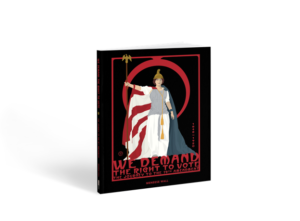We Demand the Right to Vote: The Journey to the 19th Amendment

Meneese Wall‘s new book, recently published on August 3, 2020, presents the 72-year-long struggle of achieving women’s suffrage in the United States in an approachable, conversational tone, accompanied by gorgeous illustrations. Giving an overview of the movement that is accessible to readers of all ages, especially given that women’s suffrage is an area of American history often forgotten, ignored or underrepresented in school curricula. It looks ahead to a future era when women’s history is recognized as the essential pillar of U.S. history that it is, examining American women’s journey toward gaining the right to vote through a national lens.